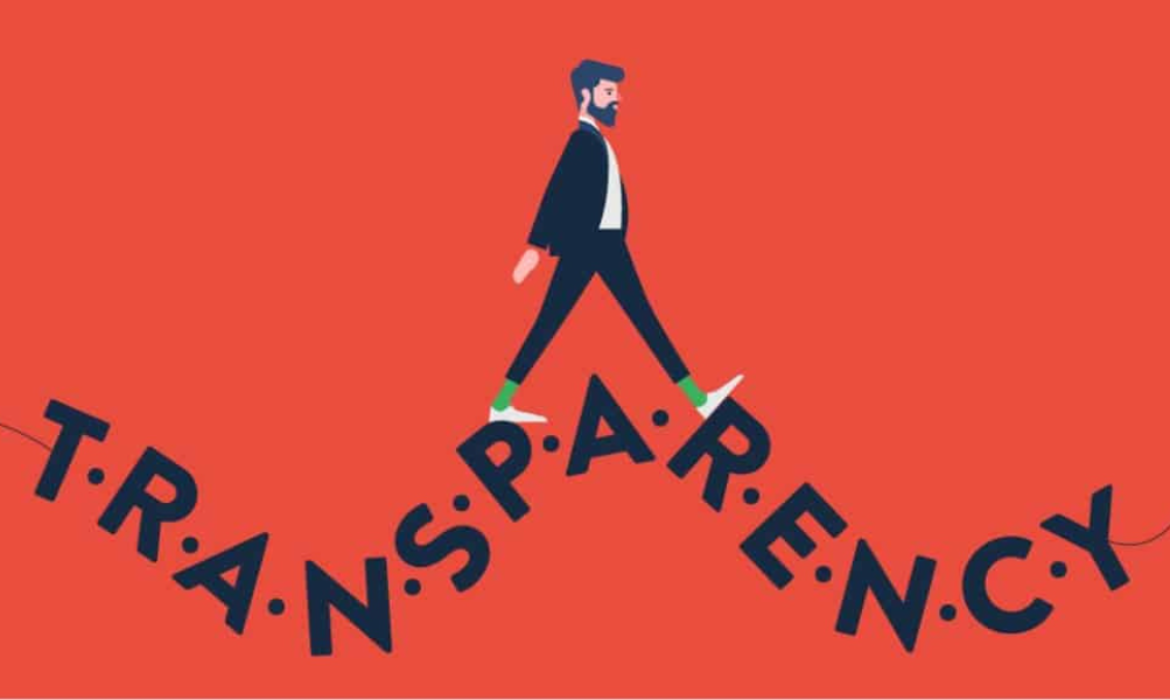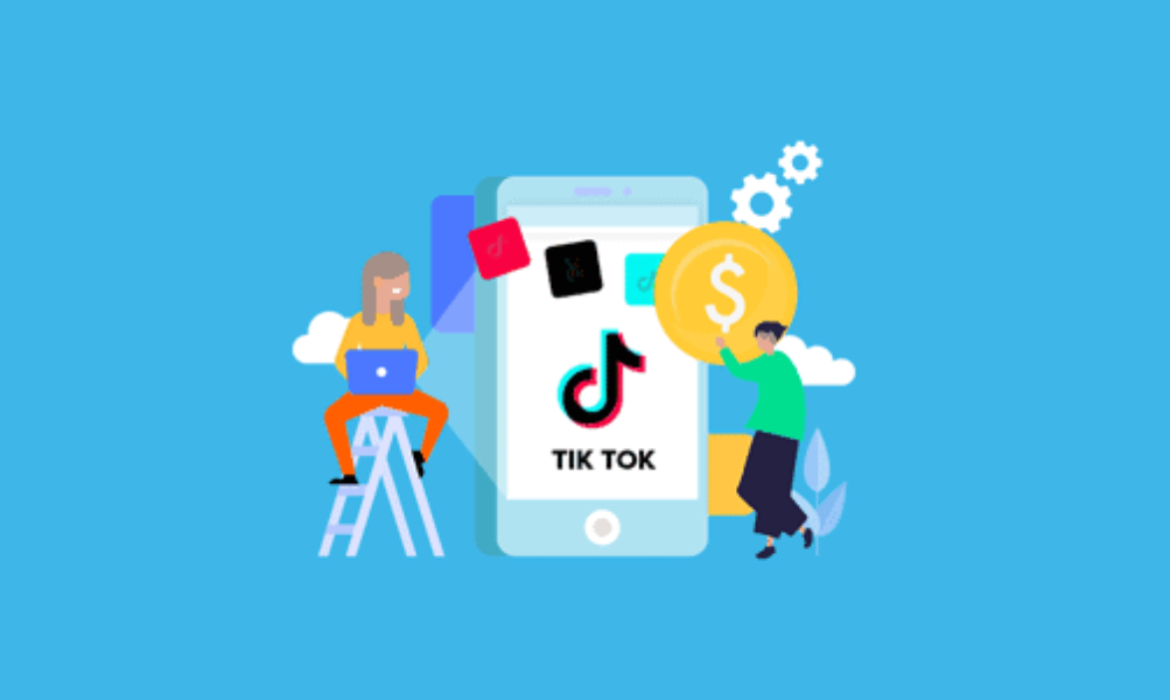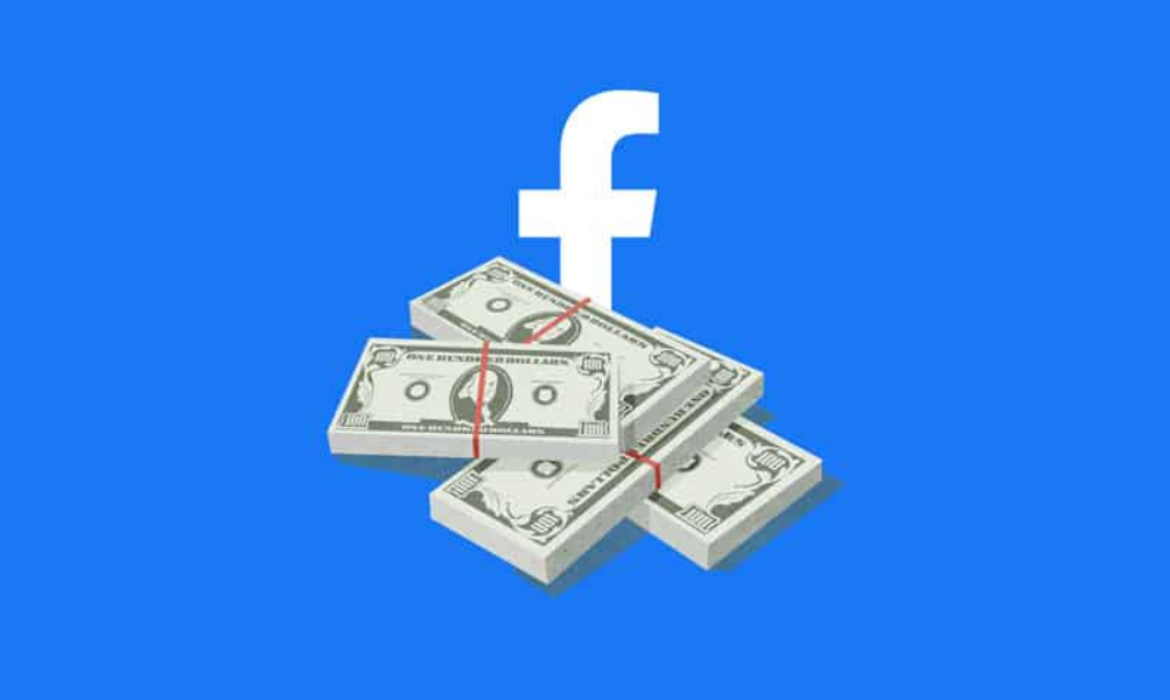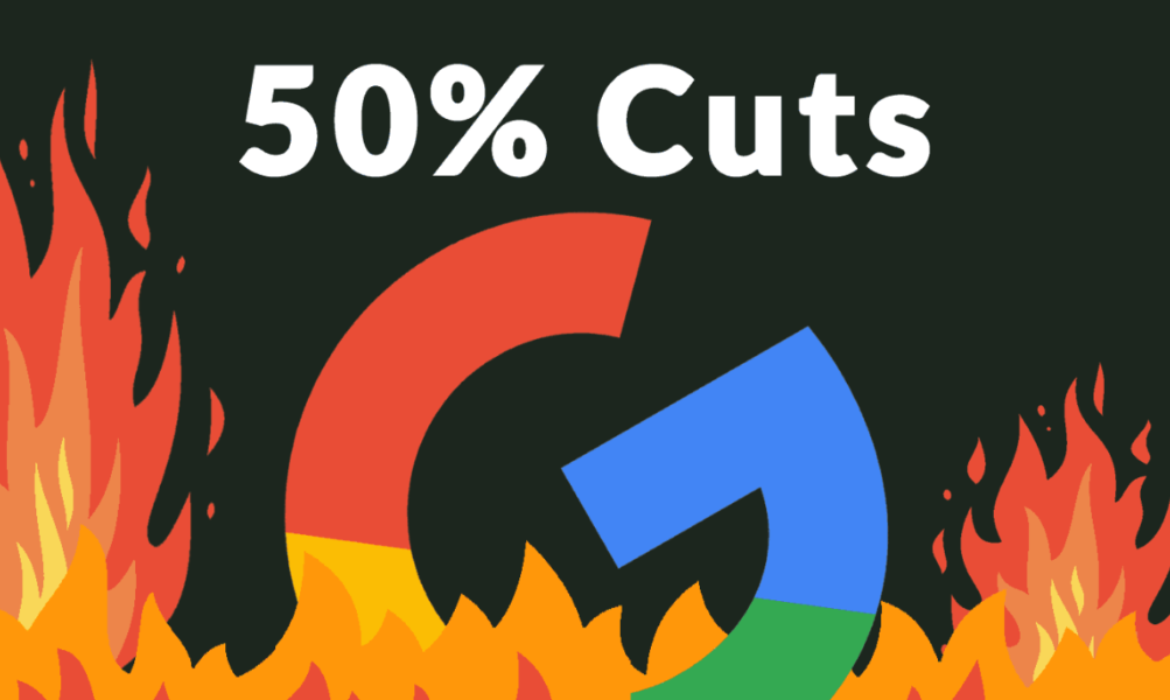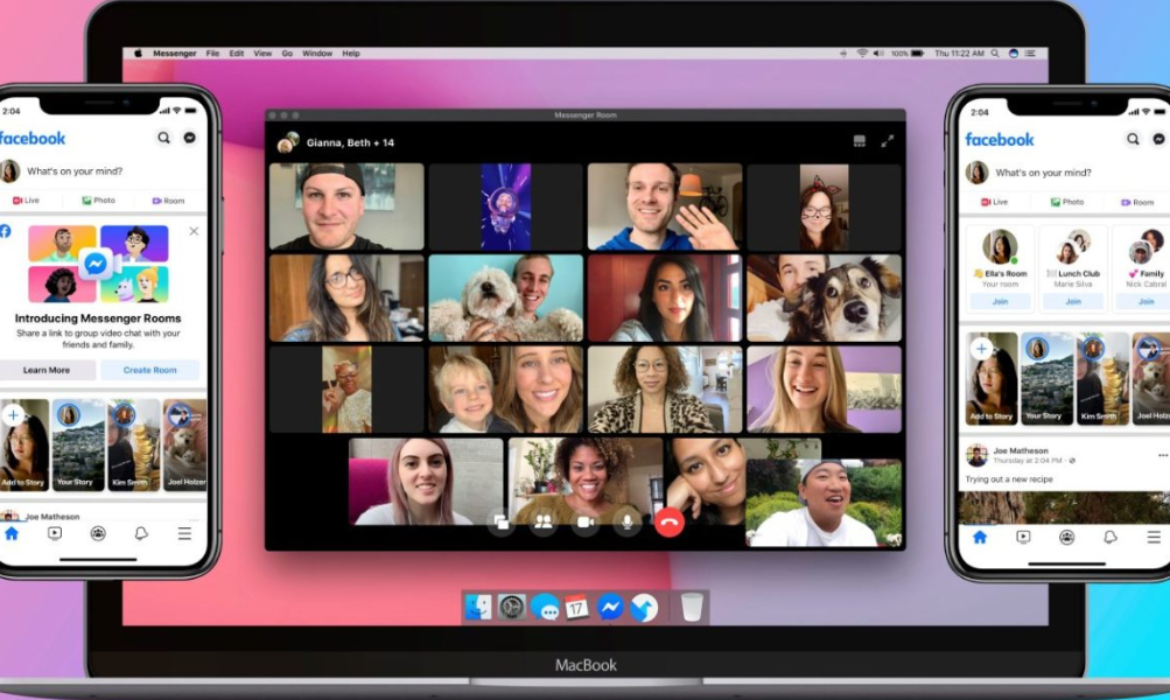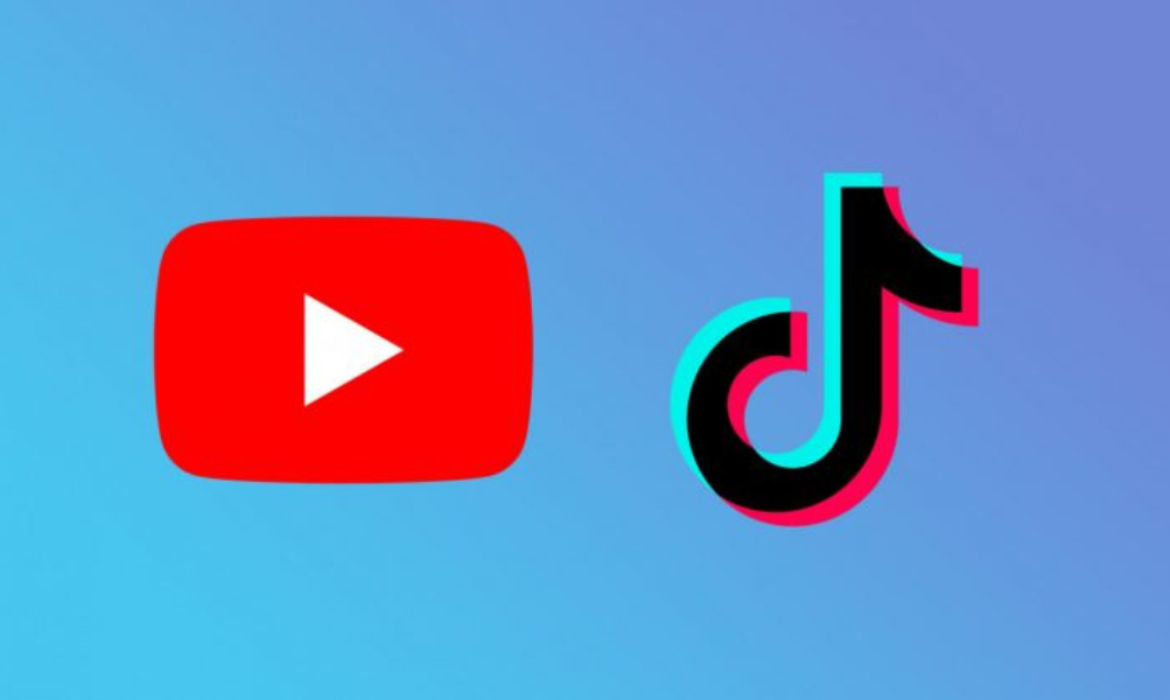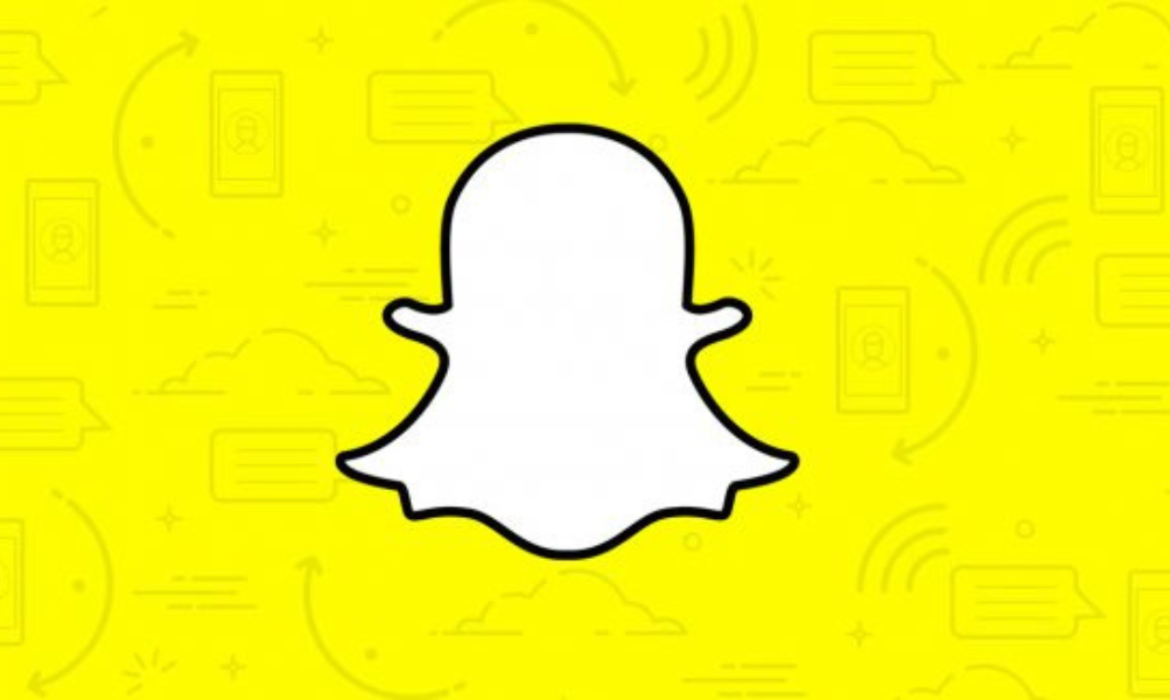Advertisers Look For Greater Transparency In Programmatic Ad Buying
Time and again, “Transparency’ has been a cause of concern for advertisers in the programmatic ad buying. This has been a long time pending issue which still remains unresolved as advertisers try to uncover what happens to money spent on programmatic ads.
Ad spend is falling and advertisers are again seeking greater transparency into the ad-buying supply chain. Hidden fees, fraud, viewability, and brand safety are the growing concerns that need immediate attention.
Trade body ISBA studies reveal that nearly half (49%) of ad buys disappear before reaching publishers and 34% of this money is the disclosed fees agencies and ad tech vendors take for trading impressions. However, 15% cannot be attributed to what the report called an ‘unknown delta’ on the supply chain. The amount of money that reaches publishers is lower, as the report did not consider ad fraud and ad viewability.
As reported earlier, a noticeable amount of programmatic dollars doesn’t reach the publishers and it is getting increasingly harder to keep a track of where it goes. The trade body struggled for nine months to gather data from the ad tech vendors to make a report on this and when it received data is was unusable.
PwC collected information for the study was data on 267 million impressions traded between 15 advertisers, eight agencies, five demand-side platforms, six supply-side platforms, and 12 publishers from the Association of Online Publishers from Jan. 1 to 20. March. Of those impressions, only 31 million (12%) were actually analyzed by matching log-level and aggregated data across 290 different supply chains.
PwC reported that it was highly cumbersome and hard to collect data on each impression. Ad tech vendors were conservative in sharing data due non-disclosure agreements and data collected was in different formats making it difficult to trace an advertiser’s money to so many different publishers. The advertisers involved in the study were non-premium 40,525 sites on an average.
Generally, an advertiser or agency decides to buy impressions and pay for them on DSP while publishers use SSP to sell their inventory at advertisers. Data on impressions from these two platforms are matched up and PwC did the same. However, data could not give financial transparency for the advertisers and publishers There were still costs in the ‘unknown delta’ that remains unidentified on the report. For instance, hidden fees can be a combination of additional ad tech vendor fees, post-auction bid shading, trading deals, and other unknown factors.
As quoted Sam Tomlinson, marketing assurance partner at PwC in DigiDay,
“This is more because the programmatic ecosystem is built on legacy processes that are a mess.”
Graeme Adams, head of media at BT Group said,
“We desperately need to see a common set of standards adopted and more openness in this market, so that every penny spent is accounted for. If this happens, we’ll invest more in the channel; if not, we will cut back and reshape our trading approaches.”
To conduct such high and intense study is a big expense. For instance, It costs more than £1 million ($1.2 million) to collect and process the data from different sources in ISBA’s study. A lot of emphasis is given to attain log file data by marketers. If the ISBA report proves anything that the log file data can reveal everything about transparency and nothing at the same time.
Ruben Schreurs, managing partner at digital media consulting firm Digital Decisions responds to log file data and said,
“Using the overly sophisticated approach of trying to match log-file data in real-time is like buying the IBM Watson supercomputer to calculate 1+1.”
He added that advertisers should have a sensible and valuable approach by running a periodic review of their net spend on publishers and match it with publisher data cumulatively. This will help to get the right and required output to make value-driven decisions on how to optimize the value chain and avoid complicating technologies.
Nevertheless, the report findings can help the adtech industry and give the insight to enhance financial and data transparency as regulators on impressions as regulators dominate.
Steve Chester, director of media and advertising at ISBA said,
“If the ad industry can be seen to be demonstrating that we can create a more open and transparent market then it could avoid the necessity of being regulated.”
After Instagram, TikTok Targets Snapchat With Its New Augmented Reality Ad Format
After attempting to take over Instagram with its new “Shop Now” button, TikTok is getting prepared to launch its new augmented reality ad format which is similar to popular app Snapchat and Instagram.
The upcoming ad format will allow users to place dynamic visual effects that interact with their physical surroundings to TikTok videos. For instance, a car could zoom the length of the kitchen table or the user can interact with the advertiser’s mascot as it jumps around the room.
The product is expected to launch later this year with unknown pricing. The AR ads will be clickable and will have music while the user shoots video. As reported by DigiDay, a TikTok spokesperson said,
“We’re always exploring new ways to bring creativity and joy to our community. Creative effects are a fun way for our users to express themselves and for brands to bring an interactive element to their campaigns with branded creative effects.”
He further added that they will share details soon and are still experimenting with various ways to make it a valuable experience for brands. This new ad product will be in direct competition with Sponsored Lens and Word Lenses augmented reality formats and Instagram’s AR filters, though the latter is not an ad product but a filter.
TikTok already offers a product ‘Branded Effect’ which allows users to add 2 D animated lenses to their videos through their hand and face movements. These effects were produced by an in-house team costing $100,000 whereas Snapchat helped pioneer augmented reality advertising but launched Sponsored Lens costing $500,000 minimum for brands. However, over time, Snapchat introduced its lenses to ad auction, bringing the price down and billed on a CPM basis. In its Q1,2020 result, Snapchat reported that 85% more over the last year are playing with the lenses and self serve ad platform is a predominant way to buy AR products.
Meanwhile, the popularity and growth of the video app are soaring. The measurement firm Sensor tower s reveals, TikTok app and its Chinese version, Douyin, crosses 2 billion downloads on the Apple App Store and Google Play Store in March.
TikTok is quick in following the roadmap laid out by competitor social media platforms in rolling new ad products and the pace at which they are moving forward is frightening. As quoted by Digiday, Paul Kasamias, managing partner of performance at media agency Starcom said,
” If they get it right they’re going to be a huge player in the next six months to a year.”
News of the AR effect ads follows just in a month after the development of TikTok testing a new ad format call-to-action button ‘Shop Now’ for Influencer videos
Publishers at risk by relying on transactional subscription technology
Transactional technology that enables transactional customer relationship is the base of the digital publishing ecosystem for the past two decades. This is how it works- attracting a reader, showing them a headline or a few words or an article, then coming up with a paywall to buy a short subscription package and moving on.
Every potential subscriber is treated as any other e-commerce customer with the same conversion funnel. We have built complex tech- stacks to support this approach and the ad-focused tools and subscription products remain unchanged and operational at certain levels in the digital customer journey. Till now, the flexibility in the customer experience was never a question. The journey was straight, simple, and direct with a single focus -deliver content, monetize on it, and maintain engagement. However, this transactional approach no longer caters to commercial or customer needs.
Lately, people are accustomed to making their own choices- which product is suitable for them, opt for premium or family packages depending on their needs and likes. The growing subscription economy has altered the way a customer perceives their product and services.
A successful recurring relationship is built on personalization when a customer can choose the product or package right for them and leave the rest. Jim Barksdale rightly said, “There are only two ways to make money in business. One is to bundle, the other is to unbundle.”
Businesses should be able to answer important questions like which one to pick, where, and how.
Presently, to answer the questions, publishers are enforced to hack the existing transactional tools and development teams are still investing their efforts on the complex system instead of building new products to grow revenue. Marketing teams want to explore with fine-tune new customers but are hindered by the same old inflexible technology.
Ultimately, publishers suffer badly due to lack of innovation, low ad -yields, complex technology, high costs, and no personalization for consumers. In simple words, the industry’s technology is unfit and outdated and it is worrisome considering the future is about dynamic products and personalization and automation. By relying on transactional technology with all limitations, publishers are at risk, and growth is restricted in this new economy.
Coronavirus led digital publishing growth
With COVID-19, the subscription economy has changed in six weeks which could have taken longer otherwise. The UK’s largest subscription site, iSubscribe witnessed its digital magazine subscription jump 400 % jump in volume. The traffic to the Financial Times website saw a jump of 250% Y-o-Y in the past month. There is an all-time high in the industry conversion rate.
But the question now is, will this continue post coronavirus crisis when the audiences find themselves with subscriptions that are not required?
So what next to sustain this?
Commercial teams need to set up a highly personalized customer journey without reaching to their technical team for help each time. They should independently learn, test, and change a range of products, packages, and revenue models.
This implies publishers should not rely on years of coding experience to handle but need integration of tools across the customer journey- offering personalized outcomes to every potential subscriber. Publishers need tools that don’t require coding to ensure that every client, prospect, and visitor is handled by the organization and the power to build change is in the hands of the specialists who know the market.
The world’s largest publications are using this platform to get ahead of the curve and be ready to steal the thunder once the markets settle -which might not take too long.
Tik Tok Tests ‘Shop Now’ Button For Influencer Videos
TikTok, mostly considered as an entertainment platform is improving its advertising offerings and nascent Creator Marketplace that matches advertisers with vetted publishers and influencers. DigiDay reported that TikTok is testing a new ad format namely the ‘Shop Now’ button. This would link brands to the leading influencers allowing the creators to display the Call-To-Action button in their videos. The ad revenue will be divided between TikTok and influencers.
The revenue split ratio is not decided yet but DigiDay reported that the company is discussing 20/80 splits in Tik Tok’s favor. This model allows TikTok to tap into revenue that was previously shared between advertisers and influencers.
Can you shop on TikTok?
The Shop Now option influences the user to shop the product right away is one way of having both – performance and direct response ad products. The creator CTA feature is still in the early testing stage and is available to only select advertisers and agencies.
As quoted by DigiDay, a TikTok spokeswoman,
“We are constantly experimenting with ideas and features to improve the app experience for our users. TikTok is a platform for creative expression and a big part of that is showing and sharing the things you love with others. We’re in the early stages of testing a way users can add links to products to their videos and will share more updates when we have them.”
Earlier this month we witnessed Levi’s was among the first brands to partner with Tik Tok’s influencers and trial the Shop Now’ program. It partnered with the influencers to promote its “Future Finish” customizable denim technology on the platform.
Levi’s reported the product views doubled on the ‘Future Finish’ page that featured in the campaign. All advertisers can access to ‘Shop Now’ button to help drive traffic to their websites but is different from the CTA Beta test said TikTok spokesperson to DigiDay.
Is TikTok following the YouTube way?
TikTok has increased its focus on Creators and for this, it had launched Creators Marketplace late last year. The Creators marketplace helps advertisers to filter out the platform’s top creators.
It appears that TikTok is moving towards YouTube Creator shared revenue model than the Instagram model. Amy Luca, chief executive at influencer marketing company TheAmplify said,
One of the things that Instagram struggles with is retrofitting some of their programs to pull out money from the gray market ecosystem that is being earned by influencers and paid by brands on their platform.”
Growing users of the social video app
TikTok has been growing rapidly over the past year and has been on a tear since the lockdown. Data company Apptopia estimates TikTok was the second top free app on iOs and Google Play stores in the U.S. on April 28. It is also estimated to have 328 monthly active users and was downloaded 100 million times worldwide between Mar 20 through April 28.
Jude Rajanathan, a global director at media agency Zenith stated that TikTok will work on improving its CTA buttons to push for more performances and direct-response ads.
Facebook Post Strong Earnings in Q1’20, Exceeds Analysts Projections
Its earnings season and Facebook has some relatively good news on that for the investors. It has impressively beaten Wall Street expectations on revenue and earning per share (EPS). Facebook ad revenue grew by 17% Y-o-Y despite the instability in the digital ad market due to COVID-19.

Image Credit: Facebook
Why does it matter?
Interestingly, Facebook was able to beat top and bottom-line revenue expectations amid the coronavirus crisis showing how its business is strong and growing. However, the company didn’t provide specific revenue guidance for Q2 due to the ongoing uncertainty but offered a snapshot on the revenues of upcoming quarters.
- Meanwhile, Facebook said that the current rise in engagement will continue but the usage will come down once the stay-at-home orders are lifted.
- The digital advertising industry has taken a hard hit due to shelter-at-home orders globally. Facebook said in a statement, “We experienced a significant reduction in the demand for advertising, as well as a related decline in the pricing of our ads, over the last three weeks of the first quarter of 2020.”
Let’s talk numbers
- Earning per share (EPS): $1.71 vs. $1.75 per share forecast by Refinitiv
- Revenue: $17.74 billion vs. $17.41 billion forecast by Refinitiv
- Daily active users (DAUs): 1.73 billion

Image Credit: Facebook
- Monthly active users (MAUs): 2.6 billion
- Family Monthly Active people (MAP): 2.99 billion monthly users across its family of apps. This metric helps to measure Facebook’s total user base across its main app, Instagram, Messenger, and WhatsApp.
- The average revenue per user (ARPU): $6.95
- Other revenue: $297 million which is driven by sales of VR headset ‘Oculus.’
- Cash and cash equivalents: $60.29 billion
What lies ahead?
- Facebook is the third internet company that posted strong Q1 results after Snapchat and Google despite the hindrances in the digital ad market. This shows big internet companies will keep dominating the advertising ecosystem due to the pandemic.
- CCS Insight chief operating officer Martin Garner believes the impact of the virus will lead companies to use digital services from advertising to collaboration.
“………..Although Google and Facebook will take a hit from Covid-19, we expect them to be leading indicators of recovery, as digital advertising and other services show early growth in economies getting back to normal.”
Google Cuts Marketing Budgets by 50%, Freezes Hiring.
Key Points
- Budget cuts and hiring freezes across marketing and across Google.
- An internal document reveals Google is cutting its marketing budgets by as much as 50 % for the second half of 2020.
- The marketing budget cuts may be a way to combat reduced advertising earnings in the wake of coronavirus.
- The development comes in less than a week from where Google is scheduled to discuss Q1 2020 results on 28th April.
Google is doing what other big tech companies are or will be doing soon to mitigate the coronavirus impact – cutting marketing budgets. An email viewed by CNBC, sent to the marketing employees this week was about budget cuts and a new hiring freeze for full-time and contract employees.
The e-mail stated:
There are budget cuts and hiring freezes happening across marketing and across Google…We, along with the rest of marketing, have been asked to cut our budget by about half for H2.
In 2019, Google spent $18.46 bn which includes employee compensation. One important area that required advertising was Cloud, as it competes with Amazon and Microsoft by hiring more sales representatives.it is unclear how such areas will be affected that need wide consumer reach.
However, Google confirmed that some areas’ budgets are being cut but not every area will be impacted as it adjusts plans.
A company spokesperson said in an emailed statement to CNBC,
As we outlined last week, we are re-evaluating the pace of our investment plans for the remainder of 2020 and will focus on a select number of important marketing efforts….We continue to have a robust marketing budget, particularly in digital, in many business areas.
Sundar Pichai, CEO in his memo last week stated,
The clear lesson from 2008 is that preparing early is key to weathering the storm and emerging in a position to continue long-term growth…We are reevaluating the pace of our investment plans for the remainder of 2020. That starts with taking a more critical look at the pace of hiring for the rest of the year.
…we continue to invest, but will be recalibrating the focus and pace of our investments in areas like data centers and machines, and non-business essential marketing and travel.
Sundar’s announcement emphasized that the company will not cut back in areas where consumers needed Google’s support for their growth and success. It will also continue with digital advertising which is in line with the stay at home audience.
Travel advertising earnings plummets:
Recently, a search marketer who knows travel advertising well tweeted the collapse of travel-related advertising and one of the contributing factors to a negative impact on the earnings.
When nearly 10% of your business is as a performance marketing supplier to Expedia and Priceline, and they stop advertising, the knock on effects are strong: https://t.co/TKNFl3YgOs
— Martin MacDonald 🏴🇪🇸🇺🇸🇧🇧 (@searchmartin) April 23, 2020
Following the news, Google shares had dropped nearly 2%.
Facebook Rolls Out Video Chat Messenger Rooms To Beat Zoom And The Likes
- Facebook announced 50-person video chat rooms called Messenger rooms.
- Regardless of whether participants have a Facebook account, they can participate in the calls.
- Messenger Rooms are an answer to Zoom and Houseparty for Pandemic.
- Messenger Rooms will roll out this week in a few countries and the rest of the world next week including the U.S.
Video calling services have seen a sharp rise during the coronavirus crisis and the use of video calling on Facebook Messenger has doubled in the coronavirus affected areas. On Friday, Facebook CEO Mark Zuckerberg delivered a live stream to announce the company’s retooled video products for users to connect while at home under quarantine. The video update perfectly fits Facebook advertising plans that focus on e-commerce.
As many countries issued stay-at-home orders, rival apps Zoom witnessed a drastic growth in the active users to 300 million in April, and Houseparty, owned by Fortnite-maker Epic Games, was downloaded more than 2 million times in the start of March. Facebook has seen the success of Zoom, the video conferencing sites popular among the companies that have sent employees to work-from-home. The biggest product launch ‘Rooms’ will be created via Facebook Messenger which allows 50 people to hang out at a time. The company plans to add the feature to Instagram, Whatsapp and it’s portal-video calling devices soon.
Key features of Messenger Rooms:
- People will be able to keep their room private, block unwanted participants, and invite people who are not on Facebook.
- Participants can use AR filters and change the background real-time
- Discoverable rooms will be listed at the top of the feed.

Image Credit: BBC
However, messenger rooms are not end-to-end encrypted like Group Facetime or WhatsApp call. Stan Chudnovsky, VP of Messenger said on the blog,
Room calls are not end-to-end encrypted, but Facebook says it does not view or listen to calls. The creator of a room can remove participants at any time, and rooms where illicit behavior is taking place can be reported to Facebook. (WhatsApp video calls are end-to-end encrypted, offering an extra layer of protection to users.)
Summary of Other Updates from Facebook
- WhatsApp will accommodate from four to eight participants in the video group calls making it a suitable competitor to Zoom.
- Facebook Live and IGTV: Facebook is creating advertising that fits in this environment especially in the areas that are popular among consumers like home cooking, fitness, and others. It will be open for business and more e-commerce activities will take place. 800 million people watch live streaming on Facebook and Instagram.
- Donate Button on Live videos: This helps musicians, artists, people, and activists can raise funds for causes during the coronavirus outbreak.
- Live via Audio only: with more musicians doing live concerts on Facebook Live, you can listen in case you cannot watch it or want to save on data.
- Instagram Live On Web: You can watch live videos related to any activity or product from the desktop.
- Portal Live: One of Facebook’s hardware projects that have seen a slow adoption but with the COVID-19 crisis the sales increased tenfold. You can go to Live to the pages and Groups devices from Portal devices and can also create interactive content for customers and communities.
- Facebook Dating Video Chat: It is in the nascent dating service. Facebook dating is a virtual meet up and does a video chat with matches on Facebook first.
Facebook is going to report quarterly earnings next week and it has already said that the revenue has been negatively affected due to the coronavirus crisis as advertisers have pulled back on spending and online ad auction prices have been reduced. According to eMarketer Facebook ads and the amount it earns from each unit sold has decreased by nearly 50% in some categories.
Debra Aho Williamson, principal analyst at eMarketer, in her note said,
“Those losses will be made up for by gains in categories that increased their use of Facebook advertising at the end of March, either to market products or services aimed at people staying at home, or to take advantage of drastically lower ad costs.”
Snap’s Q1 2020 Report: Users and Revenue Increases, Ad Spend Declines
Snap Inc. the parent company of the popular social media platform Snapchat reported in its Q1 2020 earnings – strong gains in both users and revenues but a dip in advertiser spend despite the growing concerns about the coronavirus pandemic.
No Coronavirus Negative Impact on Earnings-Yet
The stock was up nearly 20 percent after the company reported a 44 percent (Y-o-Y) increase in its first-quarter revenue to $462 million. That was a far better performance than expected. The ad spend growth grew 58% in January and February, and fell to roughly 25% in March (when the pandemic grew rapidly), the gains from the first two months helping to end the quarter positively.
CFO Derek Andersen said during Snap’s earnings call,
“The economic environment has become challenging for many of our advertising partners.”
The company didn’t provide guidance for Q2 citing uncertainty related to the worldwide economic crisis but in an unusual step, provided revenue growth figures for the first week of April. The advertiser mix on Snapchat contributed to the Q1 performance and continues to help in Q2. Snapchat has a few small business advertisers unlike Facebook and Instagram, however many large advertisers are ready to commit on a regular basis.
Snapchat CEO Evan Spiegel said in a statement,
“We are grateful for the opportunity to serve our community and partners during this difficult time.” He added, “Snapchat is helping people stay close to their friends and family while they are separated physically, and I am proud of our team for overcoming the many challenges of working from home during this time while we continue to grow our business and support those who are impacted by COVID-19.”
Strong User Growth and increase in Engagement
Snapchat’s daily active user (DAV) base reached 229 million in the first quarter across all regions and on Android and iOS.This represents a 20 percent increase from last year.

Image Credit: Snapchat Earnings Slides
There is some concern over the divergence of Snapchat’s users’ growth. Snapchat added 2 million more users in North America- the most lucrative market but the majority of the growth was from the ‘Rest of the World’ category. Snapchat has witnessed significant growth in the Indian market since it revamped its Android app, a key contributor to the ‘Rest of the World’ category.
However, the key area of opportunity that Snap would prefer to boost growth in the US as it will get more 3.5x more revenue per user.

Image Credit: Snapchat Sides
Besides, the time spent on Snapchat has increased due to coronavirus. CEO Evan Spiegel reported that the average time spent in the last week of March vs. the last week of January was up more than 20%. On the other hand, markets like the U.K, France saw more than a 30% increase.
Mobile app tracker App Annie’s findings point out 54% growth in average time spent per user on Snapchat in South Korea from March1-14,2020, compared with Q4 2019. Italy marked a 36% increase and Japan was up 23%.

Image Credit: eMarketer
Additionally, this pandemic increased communication with friends and family on Snapchat, up more than 30% in the last week of march compared to the last week of January whereas in some other geographies there was an increase of more than 50%.
Games, TV, Chat, Calling are other highlighting points of group engagement.
Snapchatters watching Snap’s premium content hub ‘ Discover’ grew 35% Y-o-Y in Q1 2020 which represents the total time spent watching shows more than doubling this quarter. The company also mentioned hiring Hulu senior vice president of advertising sales Peter Naylor.
Chief business officer Jeremi Gorman said,
“As TV budgets migrate to digital, they move to places that carry the same advantages of linear, and we’ve been investing in those things for years. Peter is just the most recent investment in the strategy.”
Snap has also launched App Stories -brings its popular stories feature to the app. It also launched five new Snap games globally. With the use of videoconferencing and live streaming to connect with friends and family, Snap has seen more than 30 times increase in the daily download of Snap camera, a desktop app that allows people to add lenses to whichever video service they use. Besides, it added more than 120 partner app integration with its Snap Kit, and the numbers of Snapchatters using on a monthly basis is up 75% from the Q4 of 2019.
Direct-Response advertising budgets make up half of the revenues.
Snap continues to double down on direct response advertisers especially in games, home entertainment, CPG, and eCommerce. Direct response advertising now accounts for more than half of Snap’s revenue.
Speigel noted,
“In the short-term, we’re shifting sales resources and pulling forward some investments in direct response to better serve the advertisers who are trying to reach our audience during this time. For example, we can help movie studios pivot to digital releases by supporting them with a suite of products designed to track titles over a dynamic and flexible release window. We’ve also seen many large brands doing a lot of important things to help their community and the broader world, and we’re helping these brands communicate their efforts to our audience in a thoughtful and approachable way that inspires others to make a positive impact.”
Snapchat recently worked with Universal on the promotion of the animated film ‘Trolls World Tour’ released digitally incorporating Trolls AR masks into Snap Camera add-on a feature that gained significant momentum as more people work from home.
Snap has worked immensely hard over the past few years to build out measurement capabilities and ad products to interest the direct advertisers resulting in nearly double total ad revenues in two years.
So what has Snap done to get this?
Snap introduced conversion-optimized bidding- which allows advertisers to optimize toward their sales or app install gaols, conversion-tracking advertising pixels, and improved ad-targeting capabilities. This has attracted performance advertisers who already buy those types from other platforms.
Snap has focused on offering unique ad products like augmented reality platforms and easy self serve ad platform.
Chief business officer Jeremi Gorman said,
“Advertisers are looking for a way to make a dollar go further. “We have efficient pricing, and we’re a great place to come to get ROAS for the audience they’re looking for.”
There is also something for Snap’s brand advertisers. The company has doubled the amount of money committed via upfronts in 2020 vs. 2019. Snap is using its creative services to help brands distribute their PSAs related to COVID-19, like the filter from Adidas encouraging people across the United Kingdom and Germany to stay at home that was viewed more than 14 million times.
Snap has a lot of potential and capacity to reach a young audience. Although things look gloomy for the remaining year of 2020, Snap appears more stable and an attractive platform for advertisers and partners. If Snap manages to expand its market appeal geographically, it will be well-positioned beyond COVID-19.
YouTube Shorts: Will it be Able to Capture TikTok’s Audience?
- TikTok is incredibly popular for lip-syncing and dancing videos.
- TikTok had nearly 1.7 billion downloads as of February 2020.
- Many have tried to imitate Tik Tok’s features but none could reproduce the success.
- YouTube is reportedly soon launching a short video sharing feature ‘Shorts’ which aims to rival TikTok but not as a standalone product.
YouTube was always the cool kid on the block with little real competition since inception. There are plenty of other video platforms like Dailymotion, Vimeo, and Veoh that aren’t a threat to YouTube until TikTok came in. TikTok is a wildly popular app with over a billion downloads with Gen Z and recently witnessed a surge in its popularity during coronavirus quarantines especially with kids and young adults who are bored at home.

Image Credit: Sensor Tower
Can YouTube overtake TikTok Audience and Popularity?
YouTube, a Google-owned company has been the most widely used video-sharing platform in the world for 15 years with 2 billion monthly users. Even though 81% of 15-25 years old using YouTube, it doesn’t have the short-form content. Therefore, it is eager to capture the younger audience segment who are crazy about short-form videos around music that makes Tik Tok a hit. As a result, YouTube is reportedly working on a new feature ‘Shorts’ that it hopes will make a dent on the surging popularity of Tik Tok and keep more people on the platform.
The website The Information reported that YT is working on its own short video feature ‘Shorts’ similar to TikTok operation within the YouTube app. According to the site:
“Shorts will include a feed of brief videos posted by users inside the Google-owned app and will take advantage of the video service’s catalog of licensed music, songs from which will be available to use as soundtracks for the videos created by users.”
MSNBC’s Dylan Byers additionally confirmed on Twitter shortly after The Information’s report was live.
YouTube’s new features can have advantages over TikTok. For instance, it has extensive music licensing agreement in place which implies that there would be an array of music options to choose from short clips. It has a larger audience base, so influencers will find an advantage to stay over the platform as they would get access to reach more potential viewers. And lastly, YouTube has better monetization policies and systems in place which is a huge advantage for the influencers.
If the service is easily monetized by the content creators, the associated advertising revenue could fund high-quality content in a short video, which can attract more viewers- a win-win situation for all. On the contrary, TikTok doesn’t offer a way to monetize videos for content creators and ad offering is in pipeline.
Is YouTube Shorts different from other TikTok competitors?
Many established tech companies in Silicon Valley have tried to replicate the success of TikTok but in vain. Facebook tried Lasso in South America, a teen focused short video format app which has yet to gain traction. Instagram and Snapchat attempted to adopt some of TikTok’s features. Byte, launched by the founder of Vine witnessed some early success but is still young. However, none of the’ newly inspired TikTok apps’ have taken off the original.
YouTube has also previously replicated the feature that resembled Instagram stories in 2018 which was successful for creators increasing the subscriber base on average by 8% over those who didn’t use the feature.
The YouTube Shorts app release date is expected to be the end of the year. It would be interesting to see whether TikTok users migrate to YouTube Shorts and YouTube can capture some thunder from the rival. It will be exciting to see how things develop and as a result, TikTok develops a monetization system and comes up with ad offering.
How Companies Like Snapchat Are Saying ‘NO’ To Targeted Ads
Do social media sites track you? In recent years, we have seen social media giants being fined multi-million dollars for breaching privacy.
A simple click, a like, a plain share, used in measuring the effectiveness of the advertising campaign kept users in the dark about how their data was being tracked. And all this began with the need for targeted ads.
Targeted Advertising is a means of advertising where consumers’ online activities are analyzed through cookies and data-mining, and in doing so, intrudes the privacy of the consumer.
Snapchat, the ‘on-the-go’ platform for users, started gaining in popularity amongst the top social network marketing platforms due to its organic, unfiltered, and real-life content.

(Image Credits: Michael Cohen/ Getty Images for New York Times)
Why is Snapchat is continuing to say NO to targeted Ads?
In October 2019 talks at GS, Snap Inc. Co-Founder and CEO Evan Spiegel aptly discussed how social media and digital marketing have transformed the way people communicate. He has rightly touched upon the debate surrounding the privacy of social media users.
In spite of NO targeted ads, why are companies keen to use Snapchat to market their products?
The answer lies in their statistics –
– By December 2019, Snapchat reached 218 million active daily users (Statista Report – 2019).
– Snapchat users, open the app over 20 times a day and spend an average of 30 minutes creating 3 billion snaps a day on the platform.
– Of the Snapchat users, the millennials and Generation Z, almost ¾ of them are under 25.
– Snapchat has more than 14 billion video views per day
– 18% of all social media users also use Snapchat.
– 76% of Snapchat users are also online shoppers.
What Marketing goals do marketers aim with Snapchat?
- Brand awareness
Almost 4 out of every 10 Snap chatters discover brands through Snapchat celebrity endorsements and online posts by expert bloggers or via vlogs (as per Global web index, July 2018).
- Lead Generation
For those trying to expand the top of your marketing funnel, Snapchat advertising lets you create ads within Ad Manager to drive users to download, form fill, or register.
- Driving local traffic to your website
Custom audiences are a success on Snapchat’s platform. The smaller the audience size, and the more specific the user types, it is easier to reach them. You can choose audience sizes and specific cities/countries to target.
- Increase Video Ads
Since ads are video-based, Snapchat provides a platform on its site for creating and editing video ads. This means without expensive outside or third-party editing services you can utilize the budgeted amount to increase the number of ads on Snapchat.
- New audiences
If your product can appeal to a younger demographic but you are unable to connect with them on other platforms, then Snapchat could be your best bet.
- Website views and conversions
A Snapchat ad encourages the user to swipe up, read more, or check out the website leading to a direct conversion through Snapchat advertising.
- App Installs and Engagement
Snapchat advertising is uniquely targeted to mobile users in a way that Facebook, Twitter, Pinterest, and others can relate to but never quite imitate. The target audience is only a touchscreen away from the app store – or a tap away from a deep link placing them right where you want them in-app.
What are the available ad formats on Snapchat?
Snapchat offers three different kinds of ad formats.
i. Snap Ads: Snap Ads appeal to the widest range of advertisers. They come in three forms. Long-form video, website traffic, and app install.
ii. Filters: Filters show up when you take photos on the app. They are designed for brick-and-mortar locations or for large live events.
iii. Lenses: Like filters, lenses show up on selfie shots and are best reserved for wide-spread brand-awareness campaigns.
How will my marketing campaign work on Snapchat if there are no targeted ads?
Like on every social media platform test the waters. The advantages of Snapchat are,
a. Assess if your target market uses Snapchat
Depending on your product/service and the profile of your users, you can have a fair indication, if your target audience uses Snapchat. Or how about asking your Twitter followers if they are on Snapchat? Don’t simply conclude basis demographics that your product/service may not be fit to be marketed on Snapchat. CNN would not be on Snapchat if it thought youngsters are not really interested in world news.
b. Compare Snapchat data to your own demographic data on current customers
According to eMarketer, 6.4% of Snapchat users are going to be between the ages of 45 and 54 which is up more than 2% from 2017 and will be growing in numbers. Further 70% of users are women. Of these, 71% are less than 25 years old, and 38% of them enjoy an income of over $50,000.
Once your product fits the age, gender and lifestyle demographics of your current audiences, Snapchat may turn out to be a good place for your product.
c. Spend a small amount
As per Hootsuite, filter-based Snapchat Ads are as low as $5. The price only increases with the size of the reach. For example, Hootsuite found that an entire city cost $3,000 for them, while the immediate area around their office was only $13 for two days. This gives a first time advertiser to try out the platform without major spending
Conclusion
One of the reasons for the stupendous growth of Snapchat is the position it holds in terms of augmented reality. (Just launched Snapchat’s AR filters that are turning the floor into lava). Universal Pictures wasn’t the first company to place an advertisement on Snapchat, but it was the first to pay Snapchat for an ad. Taco Bell recently told Adweek.com that about 80 percent of its followers open its snaps and 90 percent of those people view the messages in their entirety. It’s easy to understand why brands might be willing to overlook some of Snapchat’s weaknesses when you compare it to the low single-digit engagement averages for organic posts.

